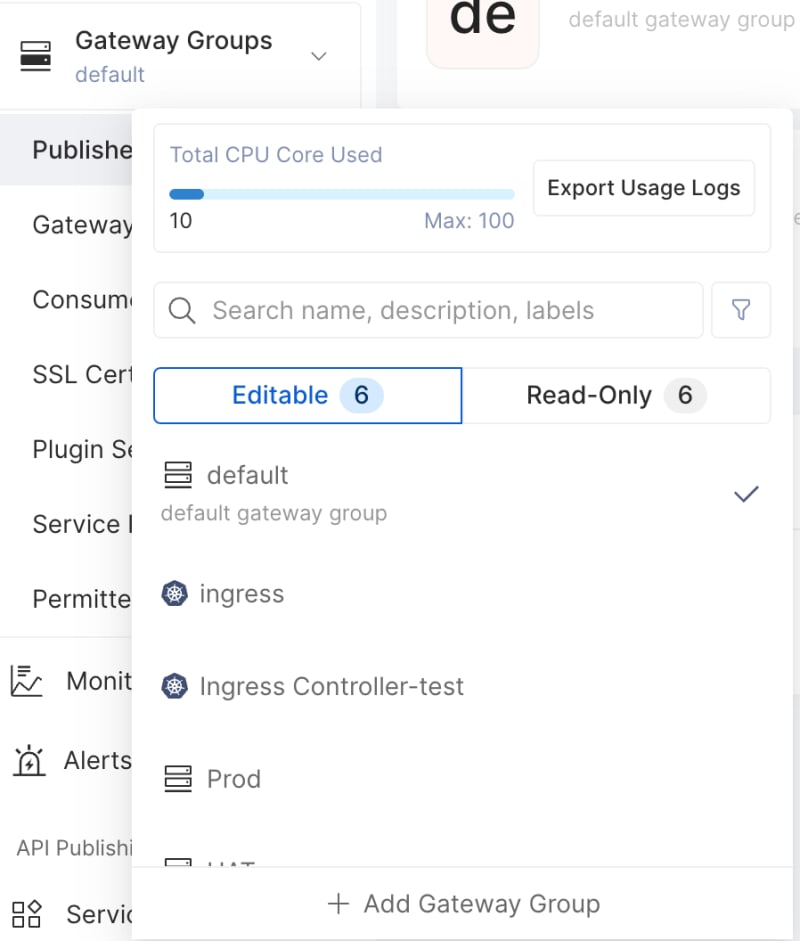API7 Enterprise offers features to segregate gateway environments based on gateway groups and manage versions between different gateway groups using service templates. With increasing diversity in API management requirements, we have recognized that complex version management is unnecessary for some users during daily operations but they prioritize flexible configuration and rapid iteration capabilities.
To better meet these users' needs and enhance the configuration experience in testing environments, the dynamic configurable enforced publish process is introduced in this update.
Advantages of Dynamic Publishing Process
Enhanced Efficiency: In testing gateway groups, frequent configuration changes often accompany new version release processes. Disabling enforced service publish processes in testing gateway groups allows you to apply configuration changes rapidly in the testing environment without affecting the production environment.
Increased Flexibility: For users who do not require strict version management, disabling enforced service publish processes across all gateway groups eliminates cumbersome version release steps, providing efficient and flexible configuration management services.
How to Enforce Service Publishing?
Modifying Gateway Group Configurations
In the new version, we simplified the nested hierarchy of gateway groups, removing the original gateway group list page. Upon user login, you now default to the last accessed gateway group. The list of existing gateway groups has been moved to a popup window, accessible by clicking the gateway group name in the left menu for quick viewing, switching, or creation.
When creating or editing gateway groups, you can choose whether to enable "Enforce Service Publishing". By default, this switch is off, which means service configurations can be modified directly after publishing without going through a publishing process.
Editing Services
If the gateway group does not have an enforced publish process enabled, you can directly create or edit services in the published service list of the gateway group.
Services created directly in the gateway group or services edited after disabling the service publish process will have a "No Version" status, indicating an unofficially published version. This configuration type allows for rapid iteration without worrying about version management complexities.
When creating services in a gateway group, a corresponding service template is also created. Regardless of whether the service has a version number, you can view and manage it in the service center.
Points to Note
- Characteristics of "No Version" Versions:
"No Version" versions can be edited at any time, but each edit overrides previous configurations without maintaining a history record, thus not rollbackable.
To solidify configurations of "No Version" versions, you can assign them a version number through a formal publishing process.
- Synchronizing Services to Other Gateway Groups:
Regardless of whether the gateway group enforces service publishing, you can synchronize services to other gateway groups.
For "No Version" versions of services, specifying a version number during synchronization ensures identical versioning across both gateway groups.
Upstream Nodes and Service Discovery
Additionally, we integrated and optimized configurations and displays of upstream nodes and service discovery, making management of upstream address types more intuitive and efficient.
Conclusion
With this update, we aim to provide users with a more flexible and efficient service configuration and management experience. Whether you need strict version control in production environments or seek rapid iteration in testing environments, these new features cater to your needs.












Top comments (0)